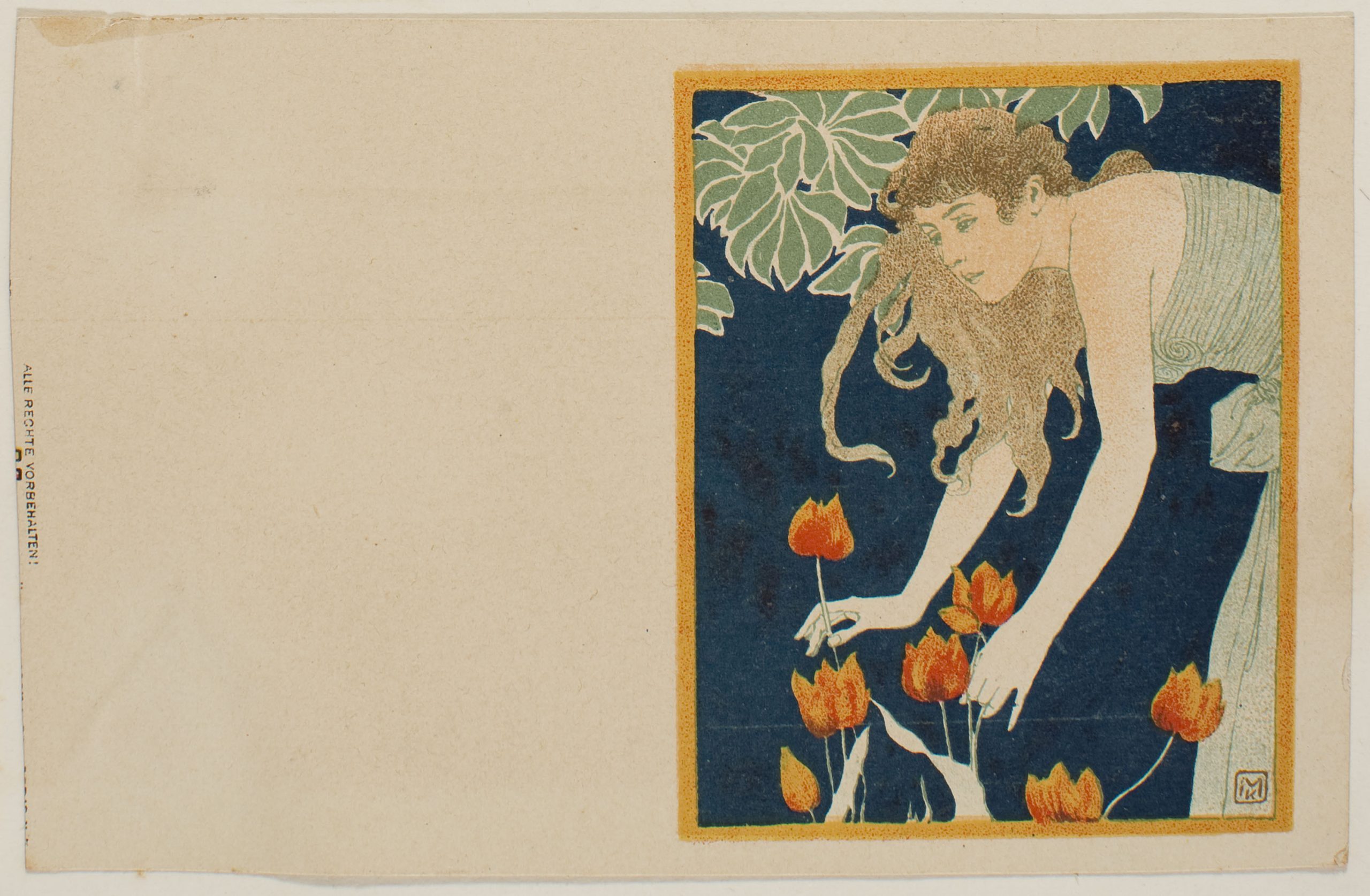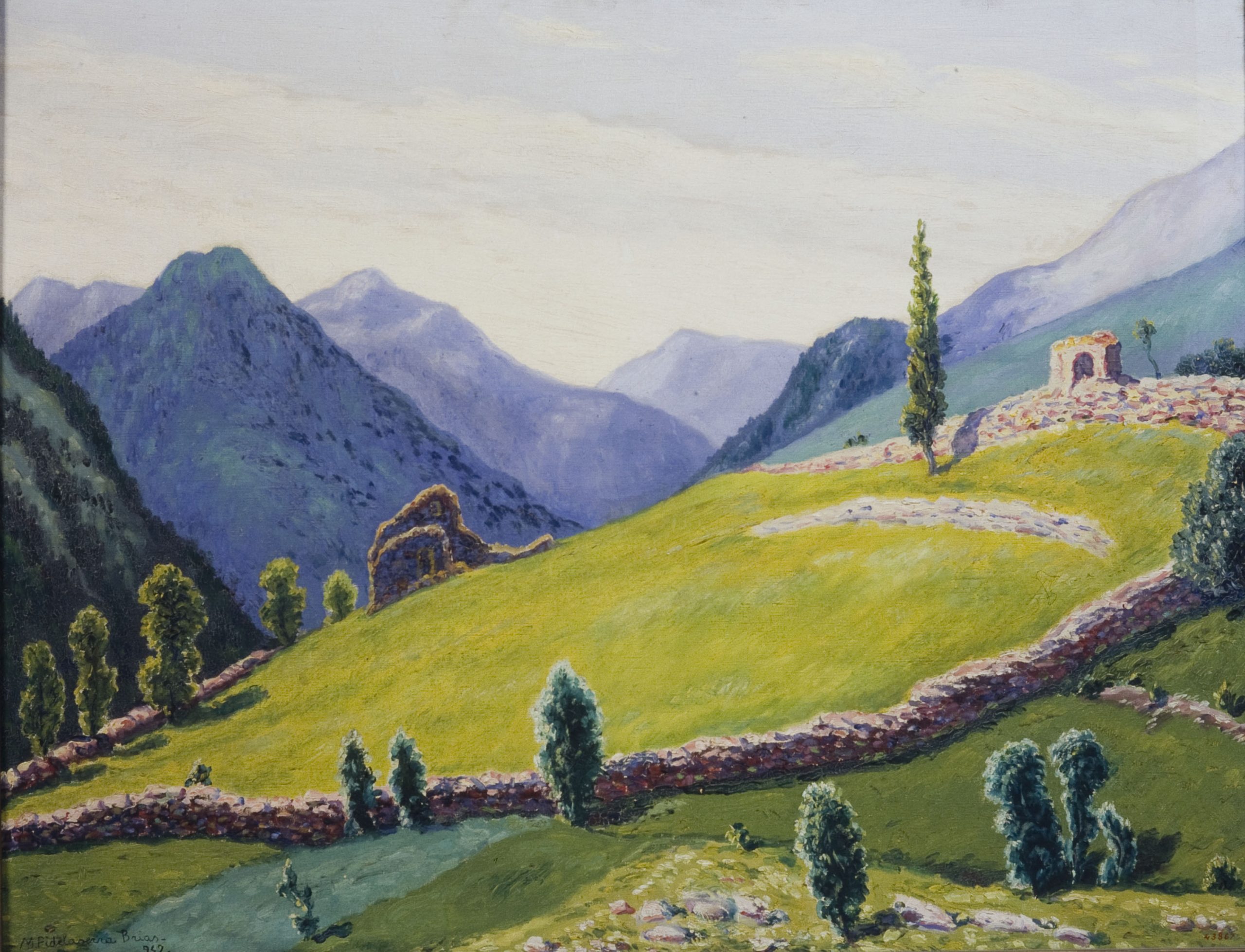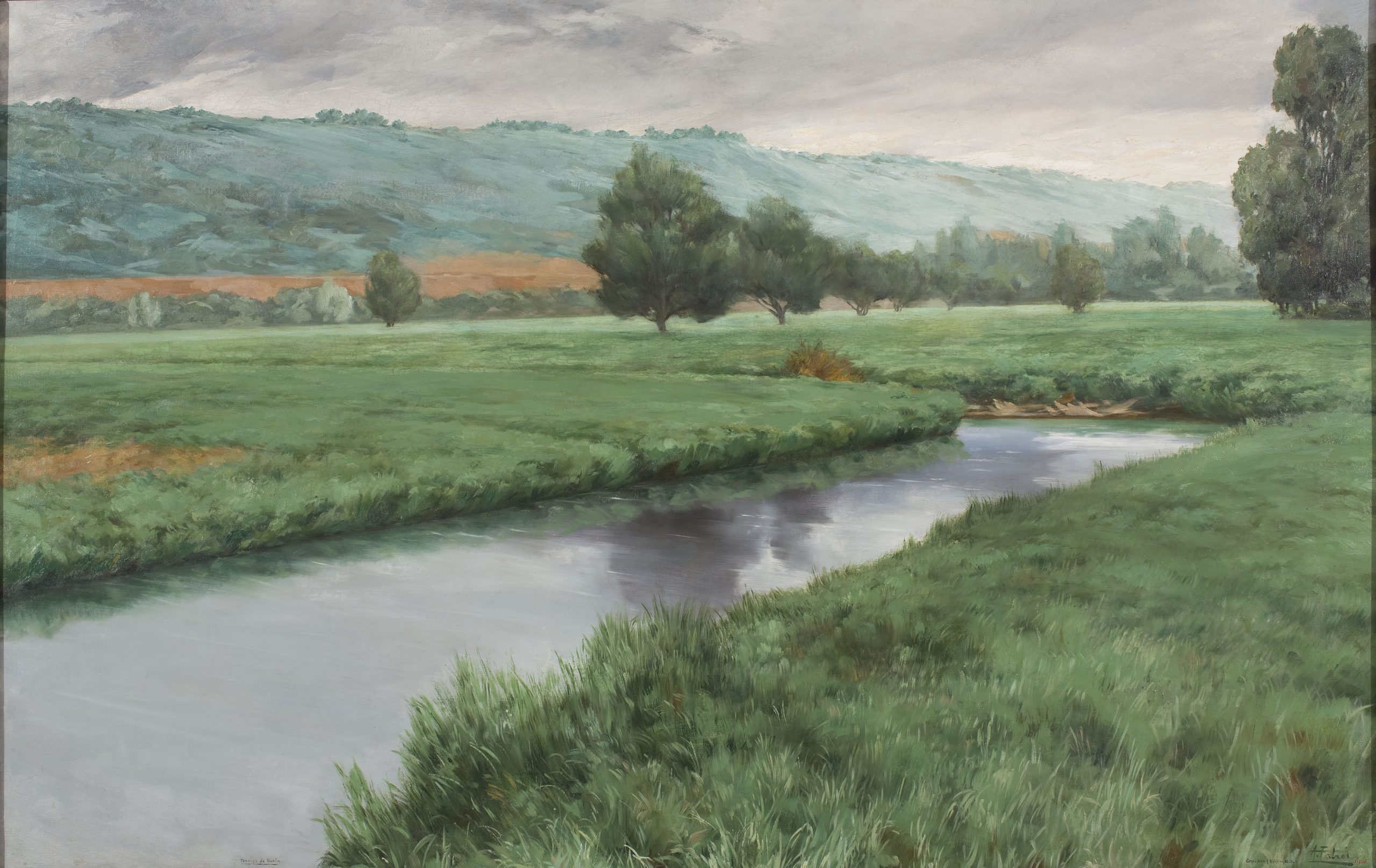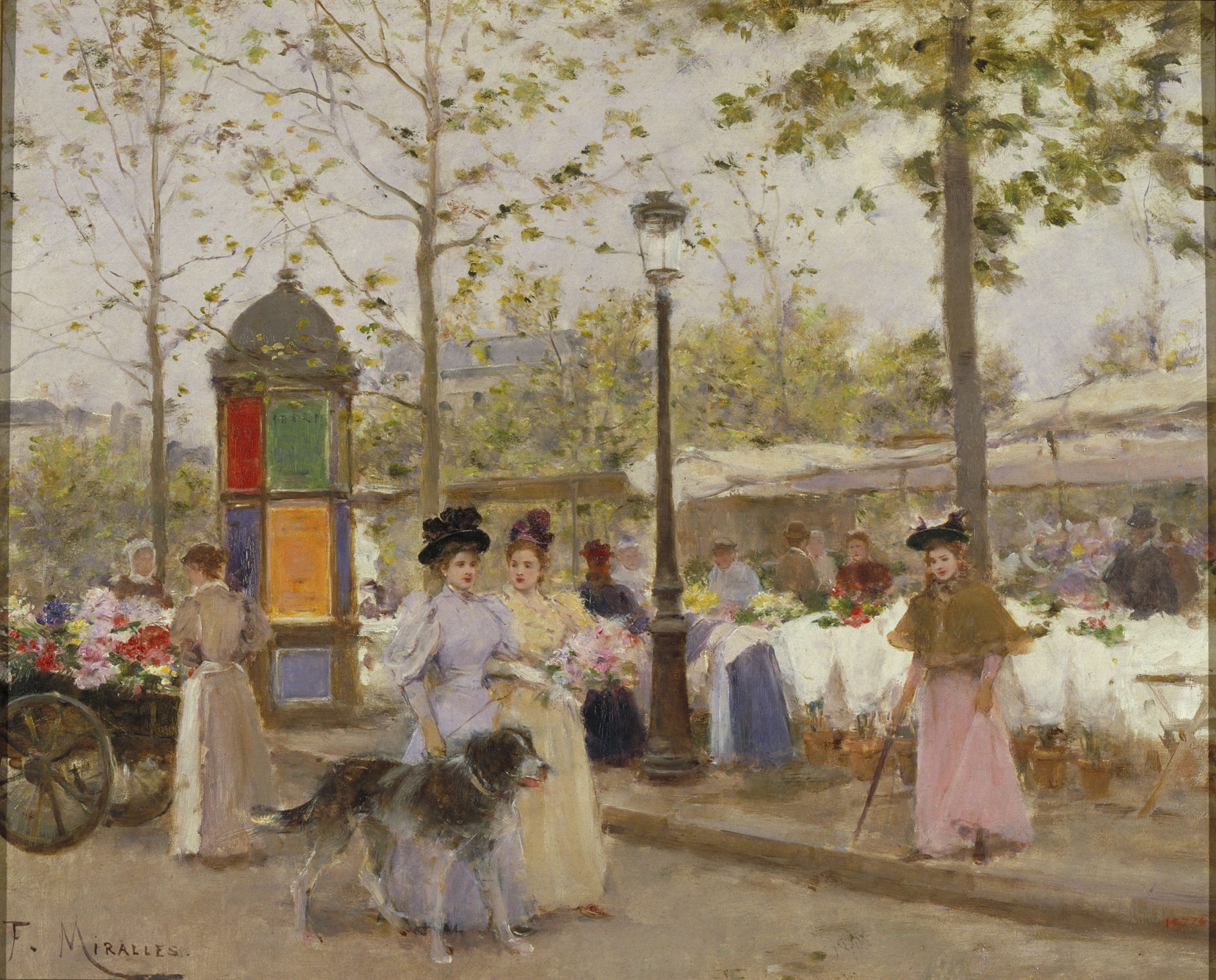Redacció digital
The arrival of spring after a long winter is always a time for new beginnings. In the course of the history of art, artists have captured all the elements associated with this season in which the beauty of nature bursts forth intensely, but it has also inspired symbolic connotations such as the ideas of rebirth or the awakening of life and desires.
The world is reborn and the spectacle of nature makes this very clear. The new leaves bud radiantly and unfold on the bare branches of trees and bushes while the flowers burst out with all their colour and presence. The April rains water fields, meadows and forests, but also balconies and patios, preparing trees, plants and flowers for the culminating moment of blossoming and flowering. The light changes, the days lengthen and produce new colours and shades offering infinite possibilities. After months of winter seclusion, the weather becomes benevolent and conducive to activities in the open air, like picnics.
And, as we did in the post devoted to winter, to celebrate the arrival of spring, we propose for you an online tour of several works in the museum’s collection that capture the essence of springtime.
Allegories
The depiction of spring has always been associated with love and beauty, but also, in a more profane spirit, with the months of April, May and June.





Genís Capdevila, Spring, circa 1910 / Joan Brull, Early flowers, circa 1896 / Apel·les Fenosa, Flora, 1934 / Claudi Lorenzale, Allegory of spring, circa 1847 / Eusebi Arnau, Springtime, first quarte of the 20th century / Edward Penfield, Harper’s May, 1898 / Louis John Rhead, The Century Magazine for June, 1896 / Josep Lluís Pellicer, Allegory of the month of May, 1882 / Anonymous. Catalonia, Small coffered ceiling panel with allegorical scenes on the work of May and June, circa 1300 / Modest Urgell, April, circa 1878.
Women and spring
Since ancient times, the young female figure has been associated with this season, as in the case of Ceres (Demeter), the Roman goddess of agriculture and harvests. Whether in a group or singly, nude or wearing spring dresses, we see the female figures that artists everywhere have imagined dancing or picking flowers, speaking to us of rebirth and springtime beauty.







Anonymous, Ceres, first half of the 18th century / Utagawa Kunisada (Toyokuni III), Namban joruri mitate, 1847-1848 / Antoni Serra, Josep Pey, Fàbrica de Porcellanes i Gres d’Art, Vase decorated with a female figure, circa 1901-1907 / Koloman Moser, Woman picking flowers, 1898 / Joaquim Sunyer, Nude (Springtime), 1919 / Ramon Martí i Alsina, The Woman of the Flowers, circa 1878-1882 / Leonardo Bistolfi, Première Exposition Internationale des Arts Décoratifs Modernes, 1902
Jocs florals (poetry competition)
Very particularly in Catalonia, with spring the Jocs Florals also arrive, a literary competition that over the years has created many poetic images and depictions that have accompanied the work of male and female writers.


Ramon Casas, Jochs Florals de Barcelona. Festes del cinquantenari, 1908 / Alexandre de Riquer, Jochs Florals de Barcelona any 1901, 1901
The thaw and the end of winter: sunshine and rain
When spring arrives, and with the rising temperatures, landscapes are transformed completely. The snow and ice on the high mountains gradually thaw and fill the rivers, and the rains are abundant and bring forth greenery. On the same day there can be rain, sunshine and hail, and even a rainbow can pop its head out – all symbolic and examples of this constant transformation.







Darío de Regoyos, The Downpour. Santoña Bay, 1900 / Darius Vilàs, Catalan Pyrenee, circa 1933 / Antoni Fabrés, Rainy weather, circa 1910 / Josep Armet, A Country. Memory of the Pyrenees., 1866 / Marià Pidelaserra, Aragonese Pyrenees, 1942 / Francesc Vayreda, River edge, 1927 / Baldomer Galofre, Spring landscape, circa 1880-1886
Villages, forests and meadows are once more filled with the brightest colours and invite us to experience them fully and differently. People abandon their winter seclusion and occupy these places, strolling and playing in them.







Joaquim Mir, The Jewel, circa 1910 / Enric Galwey, Spring, circa 1907 / Baldomer Galofre, Springtime in Rome, circa 1874-1884 / Joaquim Vayreda, Children Playing (study), circa 1889 / Francesc Vayreda, Spring Landscape, 1923 / Enric Galwey, Spring, 1928 / Joaquim Vayreda, Spring landscape, circa 1876-1882.
The landscapes of cities also change with the lushness and verdancy of the trees, and with balconies, patios and terraces full of light and colour. Life indoors emerges and we feel like taking long walks.








Albert Ràfols Casamada, El balcó (Balcony), 1947 / Francesc Miralles, Springtime, circa 1896 / Arcadi Mas i Fondevila, Garden (Vallcarca), circa 1912 / Santiago Rusiñol, Blue Courtyard, 1913 / Emili Bosch Roger, Spring, 1953 / Santiago Rusiñol, Balcony with Flowers and Curtain, circa 1880-1885 / Darío de Regoyos, Barcelona Seen from Vallvidrera, 1912 / Joaquim Vayreda, Terrace, circa 1891
Flora
We can’t talk about spring without mentioning flowers. The fields, the meadows, the waysides, all are filled with bright colours and refreshing fragrances that also fill vases in homes. The fruit trees blossom, a foretaste of the fruit that will appear in summer













Francesc Carrera Bou, Vase with flowers, circa 1922-1926 / Francesc Vayreda, Fruit trees in bloom, 1923 / Emília Coranty, From My Garden, circa 1907 / Josep Mirabent, Large Vase with Flowers, circa 1880-1888 / Joaquim Vayreda, April flowers, 1881 / Hermen Anglada Camarasa, Flower Vase, 1935 / Olga Sacharoff, Flowers, circa 1936 / Antoni Ollé, Vegetable gardens in spring, 1950 / Antoni Fabrés, Barely Transport in Normandy, 1925 / Joaquim Vayreda, Spring, circa 1894 / Francesc Carrera Bou, Vehicle decorated for the Battle of the flowers (Barcelona), circa 1922-1926 / Frederic Vidal, Four-leafed glass door, circa 1900
Fauna
Animals also come alive in this season: swallows and cranes migrate to breed, flying in large flocks, and just like other birds they begin building their nests for their young on rooftops and in belltowers.
While bears awaken after a long hibernation, the peacock displays its spectacularly coloured wings and spends the time in courtship rituals, and rabbits pair off to mate.








Miquel Carbonell, The Nest, circa 1893 / Joaquim Renart, Transom or overdoor from Tintoreria Gallard, 1905 / Josep Maria Jujol, Auxiliary office furniture, 1910 / Marià Fortuny, Birds and ducks in a pen and preliminary drawing of swallows (obverse), circa 1870-1872 / Alexandre de Riquer, Birds (Great tits), 1895 / Maestro de Santa Maria de Taüll, Peacocks drinking from a chalice from Santa Maria de Taüll, circa 1123 / Reial Fàbrica de Rozenburg, Vase decorated with birds and flora, circa 1898 / Ramon Martí i Alsina, Sleeping bear, circa 1870-1880
Plein air
The beginning of spring fills parks and squares, and the grass is filled with groups of friends and families enjoying the fine weather and eating in the open air. Who doesn’t like a picnic sitting on the grass?











Ricard Opisso, Man picking up a ground cigar and snacking outdoors (Promiscues and fasts, III and IV respectively), 1920 / Miquel Carbonell, Lunch in the country, circa 1883-1885 / Santiago Rusiñol, Open-Air Tea, circa 1887 / Francisco Iturrino, A Day in the Country, circa 1905-1911 / Josep Benlliure Gil, In the Garden, circa 1880-1900 / Antoni Viladomat, Spring, between 1730-1755 / John Hassall, Little Bo-Peep, circa 1893-1895 / Joan Colom Agustí, A picnic, 1917 / Gaspar Homar, Picnic in the country, circa 1905-1906 / Gaspar Homar, Three women picking fruit, circa 1905-1906 / Gaspar Homar, Women with fruit basket under a Grapevine, circa 1905-1906
Spring fever
And with the awakening of nature all the passions are rekindled … as the saying goes, people catch spring fever, because when the good weather arrives, we feel more like seeing one another, being with others, meeting people, and courting too.













Pere Casas Abarca, Sueño de amor (Dream of Love), circa 1900 / Ismael Smith, Scene of gallantry. Satirical illustration, 1911 / Ricard Opisso, Spring effects, 1915 / Feliu Elias, Spring and the painter of Sant Lluc, 1909 / Marià Fortuny, Fan with scene of gallantry, 1870 / Antoni Utrillo, Gallant scene, circa 1898 -1906 / Xavier Nogués, Fan: Love, 1937-1938 / Ricard Opisso, Saint John festiviy, III (Loving), 1921 / Francesc Carrera Bou, Galant scene in a garden, circa 1922-1926 / Josep Lluís Pellicer, Loving scene, 1881 / Ramon Martí i Alsina, A couple with a loving atittude, circa 1850 / Lluís Elias Bracons, Naturist poet, 1918 / René Grégoire, Le baiser (The kiss), 1910
And with these so passionate snapshots, we come to the end of our look at the most springlike postcards in the collection and we make a date with you for the next change of season, to discover the most summery images in the Museu Nacional.












